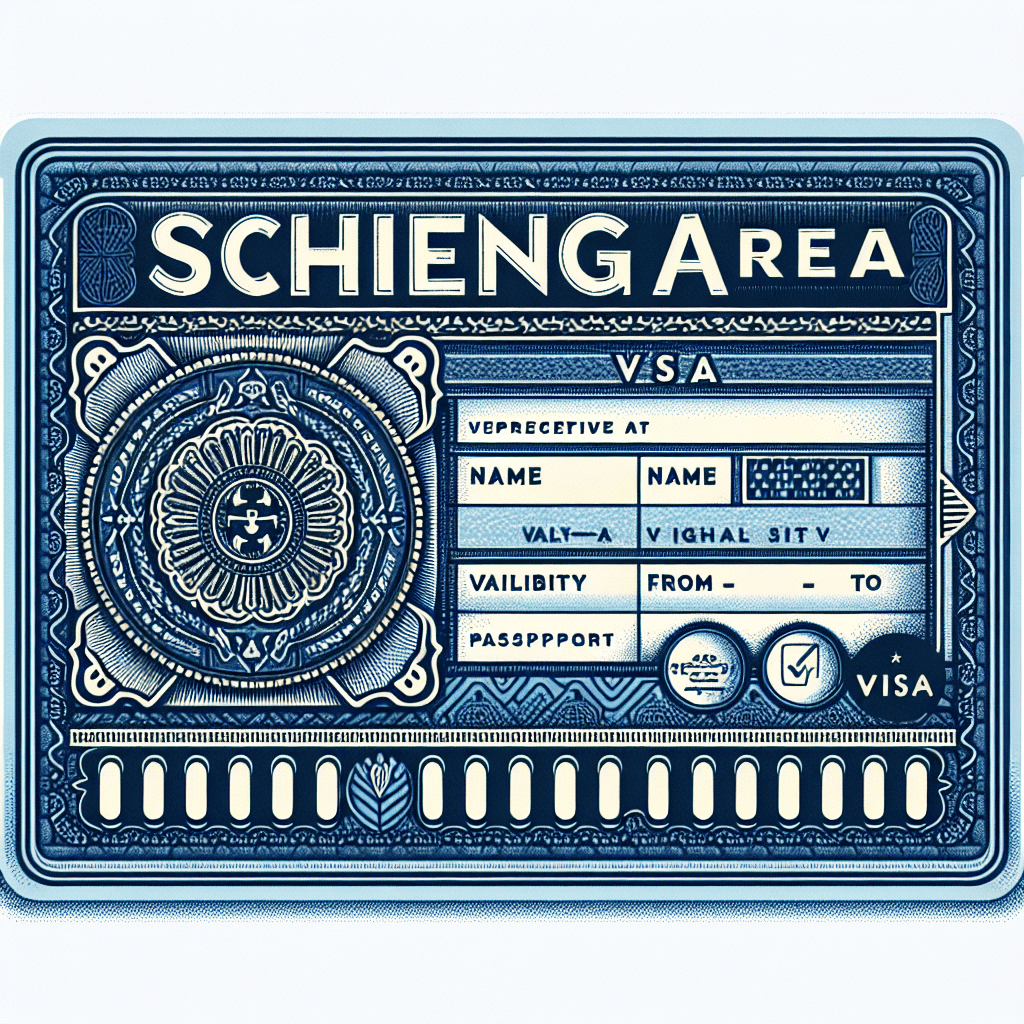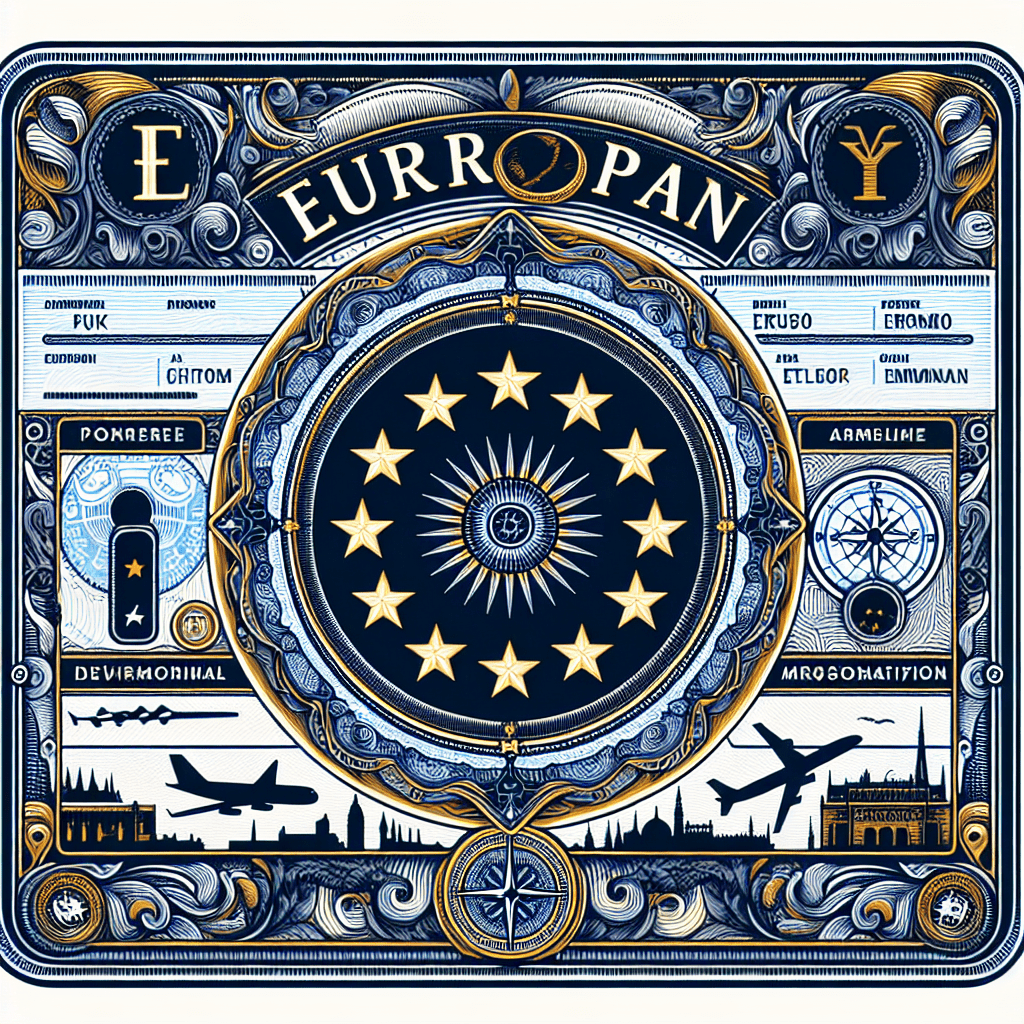4 Frequently Asked Questions About ETIAS Answered

The European Travel Information and Authorization System (ETIAS) is a pivotal development for travelers planning to visit the Schengen area. As a new travel authorization requirement, ETIAS is designed to enhance security and streamline the process of entering European countries within the Schengen zone. Understanding ETIAS is crucial for anyone considering travel to Europe, as it directly impacts the entry requirements and procedures for visa-free travel to the region.
ETIAS is not a visa, but rather a travel authorization that allows eligible travelers to enter the Schengen area for short stays. This system is part of the European Union’s broader efforts to strengthen border control and ensure the safety of both residents and visitors. With the implementation of ETIAS, travelers from visa-exempt countries will need to obtain this authorization before embarking on their journey to Europe. This requirement aims to pre-screen travelers, thereby reducing potential security risks and enhancing the overall travel experience.
For many, the introduction of ETIAS raises questions and concerns about how it will affect their travel plans. Misunderstandings about the process and its implications can lead to confusion and unnecessary stress. Therefore, addressing these common questions is essential to provide clarity and ensure that travelers are well-prepared for their trips. By answering frequently asked questions about ETIAS, we aim to dispel myths and provide accurate information that will help travelers navigate the new system with confidence.
For more detailed information on ETIAS and how it may affect your travel plans, you can visit SimpleVisa. This resource offers comprehensive guidance on the application process and other related travel requirements.

What is ETIAS?
Definition and Purpose of the ETIAS Program
The European Travel Information and Authorization System (ETIAS) is a new initiative by the European Union aimed at enhancing the security of the Schengen area. This system is not a visa but a travel authorization that allows citizens from visa-exempt countries to enter the Schengen zone for short stays, typically up to 90 days within a 180-day period. The primary purpose of ETIAS is to pre-screen travelers before they arrive in Europe, thereby identifying potential security risks and ensuring a safer travel environment for both residents and visitors.
ETIAS plays a crucial role in strengthening EU border security by providing a comprehensive database that collects and analyzes information about travelers. This system is designed to detect individuals who may pose a threat to public safety or who have a history of illegal activities. By doing so, ETIAS helps prevent potential security threats and contributes to the overall safety of the Schengen area.
The expected implementation date for ETIAS is set for 2024, and it will apply to travelers from over 60 countries that currently enjoy visa-free travel to Europe. These countries include the United States, Canada, Australia, and Japan, among others. Once implemented, travelers from these nations will need to apply for an ETIAS authorization before their trip, ensuring they meet the necessary Europe entry requirements.
Key Differences from Traditional Visas
One of the most significant differences between ETIAS and traditional visas, such as the Schengen Visa, is the application process. While obtaining a Schengen Visa requires a more extensive application procedure, including an in-person interview and submission of various documents, the ETIAS application is completed entirely online. This streamlined process makes it more convenient for travelers, as it typically takes only a few minutes to complete and receive approval.
ETIAS is specifically designed for short-term stays, making it ideal for tourists, business travelers, and individuals visiting family or friends in Europe. In contrast, a Schengen Visa may be required for longer stays or for those intending to work or study in the Schengen area. This distinction highlights the flexibility and convenience of ETIAS for those planning brief visits to Europe.
Countries eligible for ETIAS applications are those that currently benefit from visa-free travel to the Schengen zone. This includes a wide range of nations across the globe, reflecting the EU’s commitment to maintaining open and accessible borders while ensuring security. By requiring ETIAS authorization, the EU can better manage and monitor the flow of travelers into the region, enhancing safety and security for all.
Benefits for Both Travelers and EU Countries
ETIAS offers numerous benefits for both travelers and EU countries. For travelers, the system provides a more efficient and straightforward process for entering the Schengen area. With streamlined border checks, travelers can expect shorter wait times and a smoother entry experience. This efficiency is particularly beneficial during peak travel seasons when border crossings can become congested.
Increased safety and security are among the most significant advantages of ETIAS. By pre-screening travelers and identifying potential risks, the system helps prevent individuals with criminal backgrounds or security concerns from entering the Schengen zone. This proactive approach contributes to a safer environment for both residents and visitors, enhancing the overall travel experience.
For EU countries, ETIAS serves as a valuable tool in reducing illegal immigration and crime. By monitoring and controlling the flow of travelers, the system helps prevent unauthorized entry and ensures that individuals entering the region meet the necessary criteria. This not only enhances security but also supports the EU’s broader efforts to manage migration and protect its borders.
Overall, ETIAS represents a significant step forward in the EU’s approach to border management and security. By balancing the need for open and accessible travel with the imperative of safety and security, ETIAS offers a comprehensive solution that benefits both travelers and EU countries alike.

How to Apply for ETIAS?
Easy Online Application Process
Applying for the European Travel Information and Authorization System (ETIAS) is designed to be a straightforward and user-friendly process. The entire application is completed online, eliminating the need for in-person visits to embassies or consulates. This convenience is one of the key advantages of ETIAS, making it accessible to travelers worldwide.
The first step in the application process is to fill out the ETIAS application form, which is available on the official ETIAS website. The form requires applicants to provide personal information, including their full name, date of birth, and nationality. Additionally, applicants must enter details from their passport or other Europe travel document, such as the document number and expiration date. It is crucial to ensure that all information is accurate and matches the details on the travel document to avoid any processing delays.
In addition to personal information, the application form includes questions related to the applicant’s travel plans and background. This may involve providing information about the intended date of travel, the first Schengen zone entry point, and the purpose of the visit. Applicants are also required to answer security-related questions, which help assess potential risks and ensure compliance with European travel regulations.
Once the application form is completed, it is submitted electronically for processing. The estimated time to process an ETIAS application is typically within minutes, although it may take longer in some cases if additional information is required. Applicants will receive a confirmation email once their application has been processed, indicating whether their European travel authorization has been approved or denied.
Costs and Validity of the ETIAS Authorization
Obtaining an ETIAS authorization involves a nominal application fee, which is payable online at the time of submission. The fee is designed to cover the administrative costs associated with processing the application and maintaining the system. While the exact amount may vary, it is generally affordable, making it accessible to a wide range of travelers. Certain exemptions may apply, such as for minors or individuals over a specific age, who may be eligible for a reduced fee or a waiver.
Once approved, the ETIAS authorization is valid for a period of three years or until the expiration of the traveler’s passport, whichever comes first. This extended validity period allows travelers to make multiple trips to the Schengen area without needing to reapply for each visit, provided that each stay does not exceed 90 days within a 180-day period. This flexibility is particularly beneficial for frequent travelers who plan to visit Europe multiple times over the authorization period.
The ETIAS authorization allows for multiple entries into the Schengen area, enabling travelers to move freely between member countries during their stay. This is in line with the Schengen visa waiver policy, which facilitates seamless travel across the region. However, it is essential for travelers to adhere to the Europe entry requirements and ensure that their stays do not exceed the permitted duration to maintain compliance with EU travel regulations.
What Happens if an Application is Denied?
In some cases, an ETIAS application may be denied. Common reasons for denial include providing incorrect or incomplete information on the application form, failing to meet the Europe entry requirements, or having a history of criminal activity or security concerns. It is important for applicants to carefully review their application before submission to minimize the risk of denial.
If an application is denied, the applicant will receive a notification outlining the reasons for the decision. In such cases, applicants have the option to appeal the decision or reapply with corrected information. The appeal process involves submitting additional documentation or clarification to address the reasons for denial. It is advisable to seek guidance from the relevant authorities or consult the official ETIAS website for detailed instructions on how to proceed with an appeal.
For travelers whose applications are denied and who are unable to obtain an ETIAS authorization, alternative options may be available. Depending on the circumstances, travelers may need to apply for a traditional Schengen area visa, which involves a more comprehensive application process. It is essential to explore all available options and ensure compliance with EU visa policy to facilitate travel to Europe.
Overall, the ETIAS application process is designed to be efficient and accessible, providing travelers with a convenient way to obtain the necessary authorization for Schengen area travel. By understanding the application requirements and potential challenges, travelers can better prepare for their journey and enjoy a seamless travel experience.

Who Needs ETIAS, and When?
Categories of Travelers Requiring ETIAS
ETIAS is a mandatory requirement for citizens of visa-exempt countries who wish to travel to the Schengen area. This European travel authorization is essential for individuals from over 60 countries, including the United States, Canada, Australia, and Japan, who currently enjoy visa-free travel to Europe. The introduction of ETIAS aims to enhance security and streamline the entry process for these travelers, ensuring compliance with Europe entry requirements.
Travelers who need ETIAS include those visiting the Schengen area for tourism, business, medical, or transit purposes. The authorization is specifically designed for short-term stays, allowing travelers to remain in the Schengen zone for up to 90 days within a 180-day period. This flexibility accommodates a wide range of travel purposes, making it an essential component of the Schengen visa waiver policy.
There are differences in ETIAS requirements for adults and minors. While both categories of travelers must obtain ETIAS authorization, the application process may vary slightly. For minors, a parent or legal guardian must complete the application on their behalf, ensuring that all information is accurate and up-to-date. It is important for families traveling together to ensure that each member, regardless of age, has the necessary authorization to enter the Schengen area.
Timelines for Applying and Traveling
To ensure a smooth travel experience, it is recommended that travelers apply for ETIAS well in advance of their planned departure date. While the application process is typically quick, with most approvals granted within minutes, it is advisable to apply at least a few weeks before traveling. This allows ample time to address any potential issues or delays that may arise during the application process.
Planning for potential delays in approval is an important consideration for travelers. While the majority of applications are processed swiftly, some may require additional review or documentation, leading to longer processing times. By applying early, travelers can avoid last-minute complications and ensure they have the necessary European entry permit in hand before their trip.
Once approved, ETIAS allows travelers to stay in the Schengen area for up to 90 days within a 180-day period. This duration is consistent with the Schengen travel authorization guidelines, providing travelers with the flexibility to explore multiple countries within the region. It is crucial for travelers to adhere to this limit to maintain compliance with EU travel regulations and avoid potential penalties or restrictions on future travel.
Implications for Future Travel Policies
The implementation of ETIAS is expected to have a significant impact on global travel trends, particularly for those visiting Europe. By enhancing security and streamlining the entry process, ETIAS contributes to a safer and more efficient travel experience. This, in turn, may encourage more travelers to visit the Schengen area, boosting tourism and economic growth in the region.
ETIAS also influences the EU’s travel regulations by setting a precedent for future policies. As the system becomes fully operational, it may serve as a model for other regions seeking to enhance border security and manage the flow of travelers. The success of ETIAS could lead to similar initiatives in other parts of the world, further shaping the landscape of international travel.
Potential expansions or changes to the ETIAS program may occur as the system evolves. This could include adjustments to the list of eligible countries, modifications to the application process, or updates to the duration of authorization validity. By remaining adaptable and responsive to emerging trends and challenges, the EU can ensure that ETIAS continues to meet the needs of travelers and member states alike.
Overall, ETIAS represents a significant advancement in the EU’s approach to border management and security. By understanding who needs ETIAS and when to apply, travelers can better prepare for their journeys and enjoy a seamless experience in the Schengen area. As the program continues to develop, it will play a crucial role in shaping the future of travel to Europe and beyond.
Simplify Your Travel with SimpleVisa
Fast & Easy Visa Applications
Navigating the complexities of international travel authorizations can be daunting, but SimpleVisa simplifies the process for you. Whether you’re applying for ETIAS or a traditional visa, SimpleVisa offers a streamlined, user-friendly platform that ensures a smooth and hassle-free application experience. Their expert guidance and efficient processing save you time and stress, helping you get your travel documents with ease.
🔹 Ready to apply? Get started now with SimpleVisa and secure your travel authorization in just a few clicks!

Conclusion
ETIAS, the European Travel Information and Authorization System, is a pivotal development in the realm of international travel, particularly for those planning to visit the Schengen area. This system is designed to enhance security and streamline the entry process for travelers from visa-exempt countries. By requiring pre-screening through an online application, ETIAS aims to identify potential security risks and ensure a safer travel environment for both residents and visitors. The application process is straightforward, involving the submission of personal information and travel details, with most approvals granted swiftly. Understanding the nuances of ETIAS, including its costs, validity, and the categories of travelers who require it, is essential for anyone planning a trip to Europe.